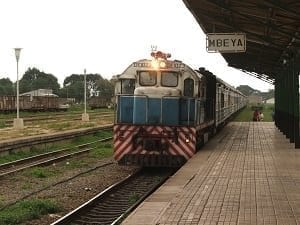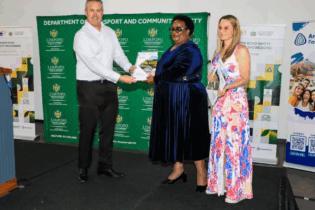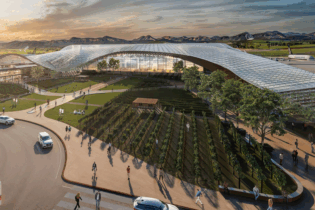Tristan Wiggill learns how Transnet’s corridor strategy forms part of a bigger drive to get rail-friendly cargo back onto the train tracks.
The North-South corridor is a containerised freight corridor, managed through cooperation between railway operators and administrators in South Africa, Zimbabwe and Zambia. These include Transnet Freight Rail (TFR), Grindrod Rail and Zambian Railways, with a joint-operating centre (JOC) based in Bulawayo. The corridor is served by more than 80 locomotives and several thousand railway wagons capable of accommodating a variety of cargo types, including bulk, break-bulk or bagged dry freight, liquids and fuels, containers and high-value mineral products. The continuing regional economic growth and pipeline of mining and related investments in the ‘copper belt’, combined with the regional governments’ policies to shift freight from road back to rail, has encouraged the operating partners to undertake significant investments in both rolling stock and infrastructure. Grindrod’s Zimbabwean subsidiary, Beitbridge Bulawayo Railways (BBR), was formed in 1997 in partnership with National Railways of Zimbabwe (NRZ) to manage the railway concession between Beitbridge and Bulawayo. The concession completes a missing link between the South African border at Musina and Bulawayo on the North-South corridor and saves significant travel distance compared to the original route via Botswana. The concession runs until 2029. Grindrod Rail has invested in six new locomotives on the Zimbabwe line in the last two years, with the track rehabilitation programme contributing to the reliability of the service. Together, Transnet Freight Rail and Grindrod secured the first container trains from Zambia to Durban in 2015 and have run 13 trains to date. A record delivery took just six days from Kitwe, Zambia, to Durban, with a northbound and round-trip container service from Zambia to Durban now possible. According to Grindrod, rail freight customers using the corridor have four basic requirements: price, reliability, predictability and security. Visibility One problem faced by South African rail operator TFR relates to visibility of trains and cargo. “We run trains in South Africa to our borders, but our customers don’t know what is happening beyond that,” says Nyameka Madikizela, executive manager: International Business at TFR. “We try to see how we can improve that so our customers have the same visibility that they enjoy in South Africa.” While TFR is looking to sign agreements with various operators, its customers want to get one service: “The team on the North-South corridor has been interesting in terms of the dynamics. The go-getters want to see change. The growth that we have experienced on the corridor is phenomenal. The Bulawayo facility is running, but there are a few things that we need to get right,” she concedes. The current framework looks at how TFR can make the necessary investments to achieve the growth in the volumes that it anticipates. “The SADC region focused, for whatever reason, on road transport and then realised that they needed to relook at the strategy for road transport, after a lot of taxpayer’s money was spent,” she says. TFR moves less than 5% of the total 24 million tonnes of annual cargo in the region on rail, but has plans to change that. “We have a dynamic road to rail strategy that is being developed. TFR has looked at how it can operate with partners so that the planning and execution are done together through the JOC. We look at other strategic projects, like the Masterplan and the capital investment plan, because rail revival requires that everyone works together.” Private sector funding is required as the running of trains cross-border requires modern technology such as track-warrant systems and on-board computers.The sky’s the limit
In aviation, there are standard operating procedures and an operating philosophy that everyone understands, no matter the country. TFR and its partners are trying to achieve a similar operating philosophy and standardisation on the corridor, in a region where French, Portuguese and English are all native. Simply running trains, however, is not enough, with rolling stock depreciating quickly in the absence of network maintenance. “In Africa, we have a bad philosophy where we take colonised infrastructure, do nothing about it and then hope that it’s going to be okay for the next 100 years. We need to have a maintenance philosophy that talks to how we can sustain the infrastructure we have. We are fortunate in that, when we got freedom (South Africa and Zimbabwe), we had the infrastructure; all we needed to do was to take it from there. Africa is the next attraction in terms of investments, but we need to organise ourselves better,” Madikizela laments. Timing is everything Critical to the success of the corridor is the amount of time taken to deliver cargo from origin to port. “We had to agree with our partners on how long it would take to move a train from Zambia to Durban. We started with 28 days, but we’ve done it in 6. We are targeting between 8 and 10 days. As a result of that performance, we’ve received a lot of enquiries from shipping lines interested in moving cargo. Rail transport isn’t plagued by the same customs issues road transport is, because stakeholders work together to plan and execute the service together.” TFR’s Masterplan began in 2014 and, with the help of Nepad, much has been achieved. The plan is about moving and scoping the service from South Africa, largely to the port of Durban, Richard’s Bay and up to Zambia, including Zimbabwe, and all the way to Kolwezi in the DRC. TFR has identified areas and lines that are important. Some of the lines need to be studied to understand how they work, particularly in terms of the copper belt. Other branch lines have also been looked at. “We’ve scoped it as dry bulk, break bulk and liquid bulk. We’ve looked at several parts of it, as it’s not just about rail – it’s about the supply chain. The supply chain is pit to port and includes partnerships with road hauliers. We collaborate with road hauliers because the intermodal strategy is key, especially in the region, as we don’t have rail sidings. There aren’t as many lines as in South Africa either, so TFR has to consolidate for the trains to turn around quickly.” While TFR has invested in rolling stock, locomotives and wagons, many redundant wagons and locomotives are being deployed into the region. The key things are consolidation and channelling trains on a regular basis. Track inspection has been done, although work still has to be done on the BBR line from Beitbridge to Vic Falls. In some parts of South Africa, trains can reach 80 km/h, but, in others areas, can fall to 40 km/h. “We are trying to achieve 40 km/h in the entire region so that we can reduce turnaround time. There is a need to replace some sleepers as some of the partners have expressed environmental concerns,” she says. Taking stock “When running trains in the region, you have to return to the basics; you have to run trains on a spreadsheet and make sure someone knows when they will arrive and that they return.” “Phase Two is about restoration, where the partners look at signalling and at tracking wagons before doing what is done overseas. The third phase requires more money, as TFR intends to grow its rail freight volumes sustainably. While polling stock is to be refurbished and new stock bought, the key thing for the business to grow is to make the cash flow work. “Freight demand analysis is being undertaken; we know there are 24 million tonnes out there,” she concludes.







